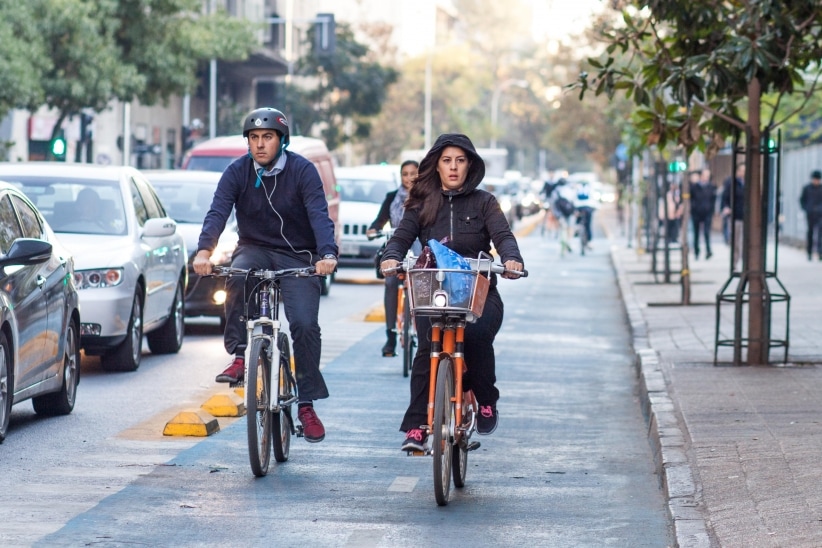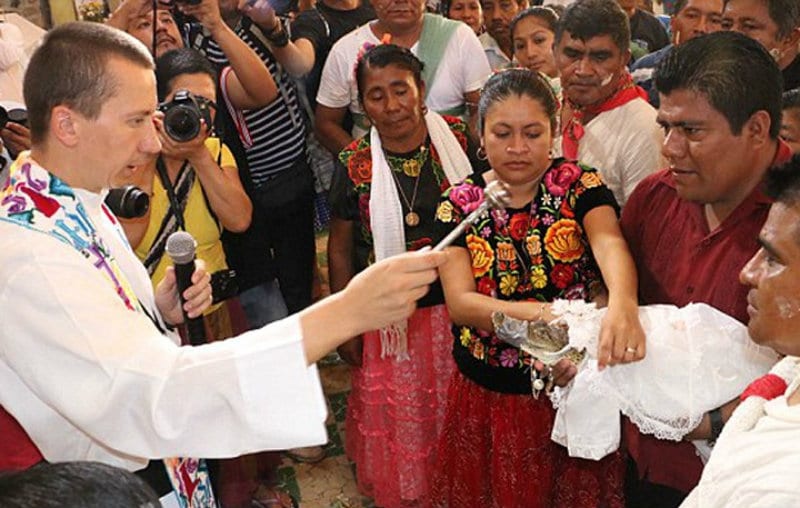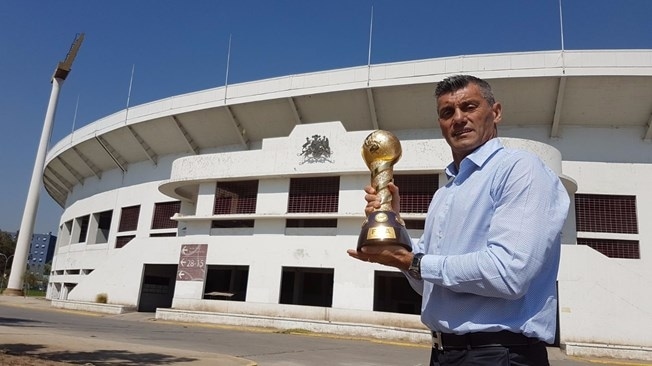
JAKE LEFFEW & JACK BROOK
The Santiago Times Staff
SANTIAGO – Hearts beating, muscles pushing and sweat flowing — more than 60 professionals mounted orange bikes for a spin around downtown Santiago, led by activists hoping to change how metropolitan-area residents transport.
The two-hour bike tour, part of the Mobilize conference hosted at Universidad Católica, showcased the city’s plans for a revitalized system of bike paths.
The Mobilize conference brought together urban transport planners and development researchers to share new approaches to tackling inequity in big cities like Santiago by emphasizing access to public transport, pedestrian routes, and bike lanes.
Most importantly, the municipality sought to highlight the Mapocho Pedeleable, a project to create a new bike path alongside the Mapocho river canal that channels Santiago’s largest river through the center of the city. Formerly filled with polluted waste water, the Mapocho has recently undergone a city-sponsored clean-up.
Last month, on June 7th, the Metropolitan Regional Council of Santiago officially approved plans for Mapocho Pedaleable, which had been in the works since 2011. Now, the 30 kilometers of the Mapocho that flow through Santiago will provide an efficient and safe way for bicyclists to commute across the city.
“This is about sharing the streets!” Pablo Felipe Arriagada shouted over the buzz of traffic. “People in the cars, they don’t understand.”
Arriagada, an anthropologist at Universidad de Chile, volunteers as a guide for Bicipaseos Patrimoniales, an organization the provides free bike trips for large groups across the city.
“The idea is that people use biking to understand the city, learn about its history and culture,” Arriagada told The Santiago Times. “We believe that biking is a very powerful tool to convey the realities of the city.”

According to Alexis Arévalo, a civil engineer at the municipality of Santiago, mobility has become an important issue only recently. Arévalo was careful to distinguish transportation from mobility, which he says emphasizes biking, walking and public transport over cars.
The basket-clad bikes used in the event are from one of Chile’s first mobility initiatives called Bike Santiago, started in 2014 by then-mayor, Carolina Toha.
Felipe Alessandri, Santiago’s current mayor, has worked to grow the initiative and add more safe bike lanes. Bike Santiago now operates in 14 different communes in the city.
However, organizers said that more bike lanes are not an easy political goal to achieve because they compete with cars for road space.
According to Miguel Olivares, mobility coordinator at the Santiago municipality, professionals and residents are concerned that bike lanes will only add to Santiago’s traffic problem. More than 3 million people go downtown every day, he say.
“It was hard to get support from professionals, citizens and neighbors because in Chile the professionals in cities are so involved with cars,” Arévalo interjected, recalling a time when he was lobbying for wider bike lanes.
Bike paths can serve as an alternative to downtown rush hour traffic. He hopes the City will give priority to other modes of transport, even though bike lanes are not politically popular.
As scores of bikers squeezed into formation and cars zipped by, organizers pointed out the narrowness of the lanes. But they believed that the Mapocho Pedeleable and the continued expansion of Bike Santiago would in time lead to a more dynamic biking culture in Santiago.
“People are finally coming around to it,” Arévalo said. “We are starting to talk about mobility.”



